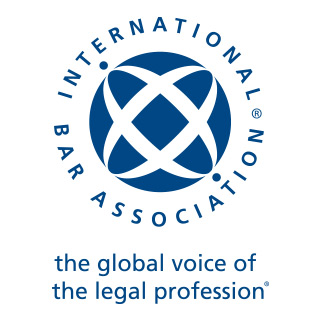Concerns about burnout are a global phenomenon in the legal profession. A study by recruitment agency Realm Recruit, published in January, found that two-thirds of legal professionals have experienced burnout. A 2021 report published by the IBA’s Wellbeing Taskforce, meanwhile, found that one in three lawyers around the world found their work to have a negative or extremely negative impact on their wellbeing, with the stressful nature of the work, intensive time demands, high levels of pressure and a poor work-life balance cited as the key issues.
Jan Dernestam, Co-Chair of the IBA Law Firm Management Committee and Managing Partner of Swedish firm Mannheimer Swartling, says that part of the reason lawyers are so susceptible to burnout is that the job can be highly unpredictable: one moment you can be preparing to wind down for the weekend and the next you are instructed on a high-stakes, big-ticket deal that will consume all of your time and energy for weeks to come.
‘A phone call on a Friday afternoon can change your life for the next six months when a large transaction comes in,’ explains Dernestam. ‘Then it’s Stanford Duck Syndrome [where individuals present a relaxed image while trying to survive a competitive environment] – you have all these ducks swimming in a pond and they all look the same but some are paddling much faster than others.’ Dernestam highlights a theory whereby the type of personalities that are attracted to professional services companies and perhaps law firms in particular are extremely ambitious and may not previously have experienced a failure. ‘If they see something as a challenge they’ll paddle faster but they’ll never admit to struggling. It’s a dangerous combination where people with ambitious personalities are working in an environment where clients demand so much and everything is urgent,’ he says.
Problems with lawyer wellbeing were thought to be so far-reaching that in 2022, the IBA’s Wellbeing Taskforce morphed into a permanent Professional Wellbeing Commission within the organisation. The Commission focuses on everything from highlighting the importance of wellbeing to promoting policies likely to have a positive impact at all levels of the profession.
George Artley, a project lawyer in the IBA Legal Policy & Research Unit (LPRU), within which the Professional Wellbeing Commission sits, says that what stands out for him in the data collected as part of the IBA report is that it’s clear that the average lawyer is likely to be heading for burnout and this is true across geographic regions, practice areas and genders. ‘People were asked to answer a series of questions and give a response rating of one to five depending on how they felt,’ he says. ‘They were scored out of 100 and, according to the World Health Organisation’s Wellbeing Index, anyone scoring 52 or under should look for medical screening for depression and other mental health issues. The global average for lawyers was 51 so the average lawyer, according to our data, would be categorised as being in need of assistance for their mental wellbeing. We thought that would be a western phenomenon but we found the scoring was quite similar around the world.’
At Mannheimer Swartling, the firm has brought in psychologists to work with its lawyers to both help them as individuals and to assist the firm as an entity in recognising the symptoms of burnout and to take steps to prevent it. For Dernestam, making it clear that support is available and that it’s okay to not be okay are important steps for fostering employee wellbeing. However, he says the biggest impact on the wellbeing of the firm’s lawyers has come from eschewing billable-hours targets, which despite being seen as a key measure of contribution and success across the profession are also known to be a root cause of stress.
‘We’re the only firm in Sweden who don’t have targets,’ he says. ‘We don’t want our associates to focus only on billable work – we want them to be just as engaged on marketing, pitches, pro bono. Even for partners we register all matters at the firm level rather than individual level. When I started as managing partner 12 years ago, every month we got all the billing and hours for every individual partner, but we saw people focusing on the wrong thing. They would take on matters rather than give them to the person best suited to do it.’ Dernestam explains that three years ago the firm’s partnership voted to stop using those numbers – individual partners now can’t see their own hours because they’re not in the system. ‘The collaboration between partners when everyone is working with a firm hat rather than an individual hat is one plus one equals four instead of two,’ he says.
Sara Carnegie, Director of the IBA’s LPRU, says the fact the IBA has established the Commission shows how seriously the profession is now taking the issue of professional wellbeing. However, she stresses that unless the profession as a whole de-emphasises the importance of the billable hour, it’s going to find that burnout remains a persistent issue.
‘There’s a huge amount to be said for revisiting the law firm business model and how people are regarded,’ says Carnegie. She notes that in a recent LPRU podcast , Georgia Dawson, Senior Partner at Freshfields, said she believes the billable hour is a huge problem. ‘We’d like to see it revisited but there’s this consistent thing of who will be the first Magic Circle firm to take that decision to bring the house of cards down,’ says Carnegie. She says that currently there’s almost an absence of alternatives to using billable hours, but the issues with them continue to repeat themselves. ‘We’ve made really big advances and having an organisation like the IBA agree that a commission is needed is a big thing, but there’s still a long way to go,’ adds Carnegie.
Although there’s a sense that in some ways long hours and intense workloads come with the territory of being a lawyer, career coach Mila Trezza – a former general counsel with energy company Eni – says there are a range of strategies professionals can employ to look after their wellbeing if they feel they’re in danger of burning out. Noticing the early signs – fatigue, aches, anxiety and changes in sleeping patterns – is key, she says, though she notes that ‘these warning signs frequently fly under the radar for many lawyers’.



